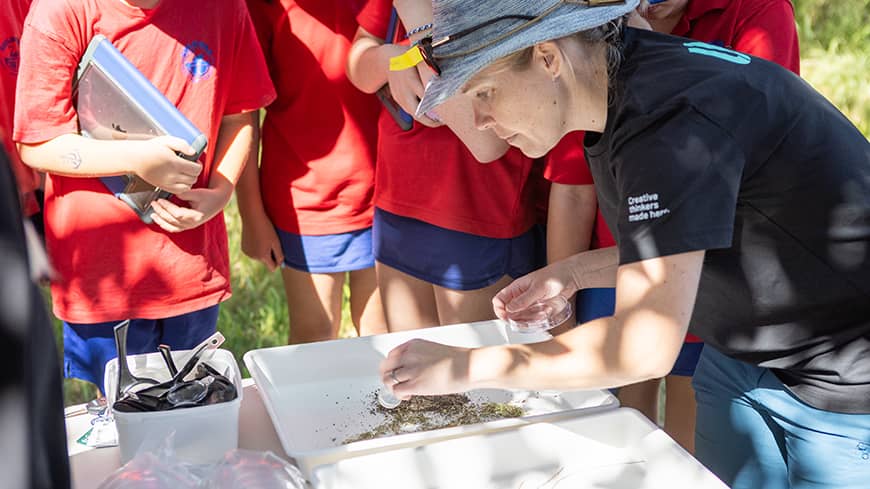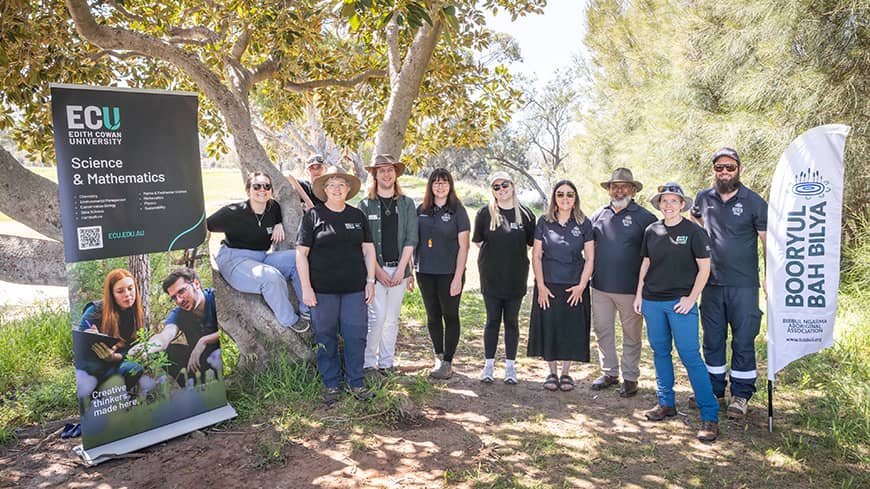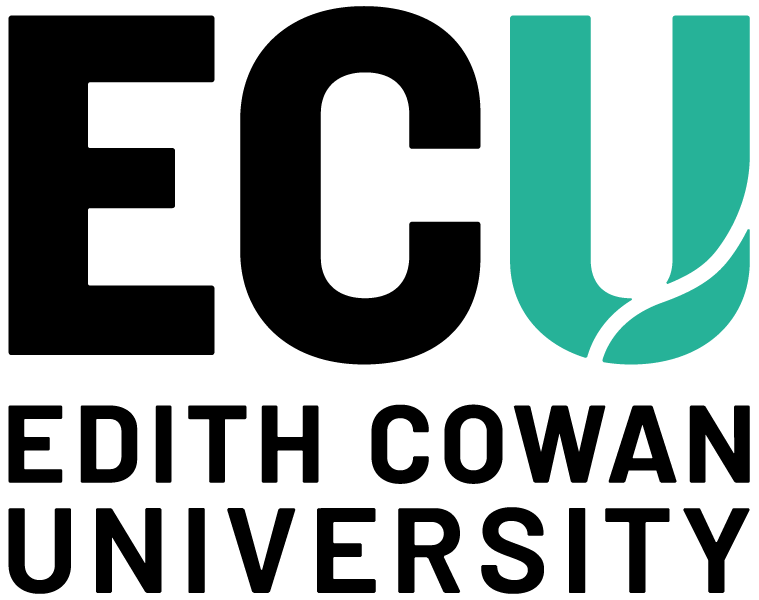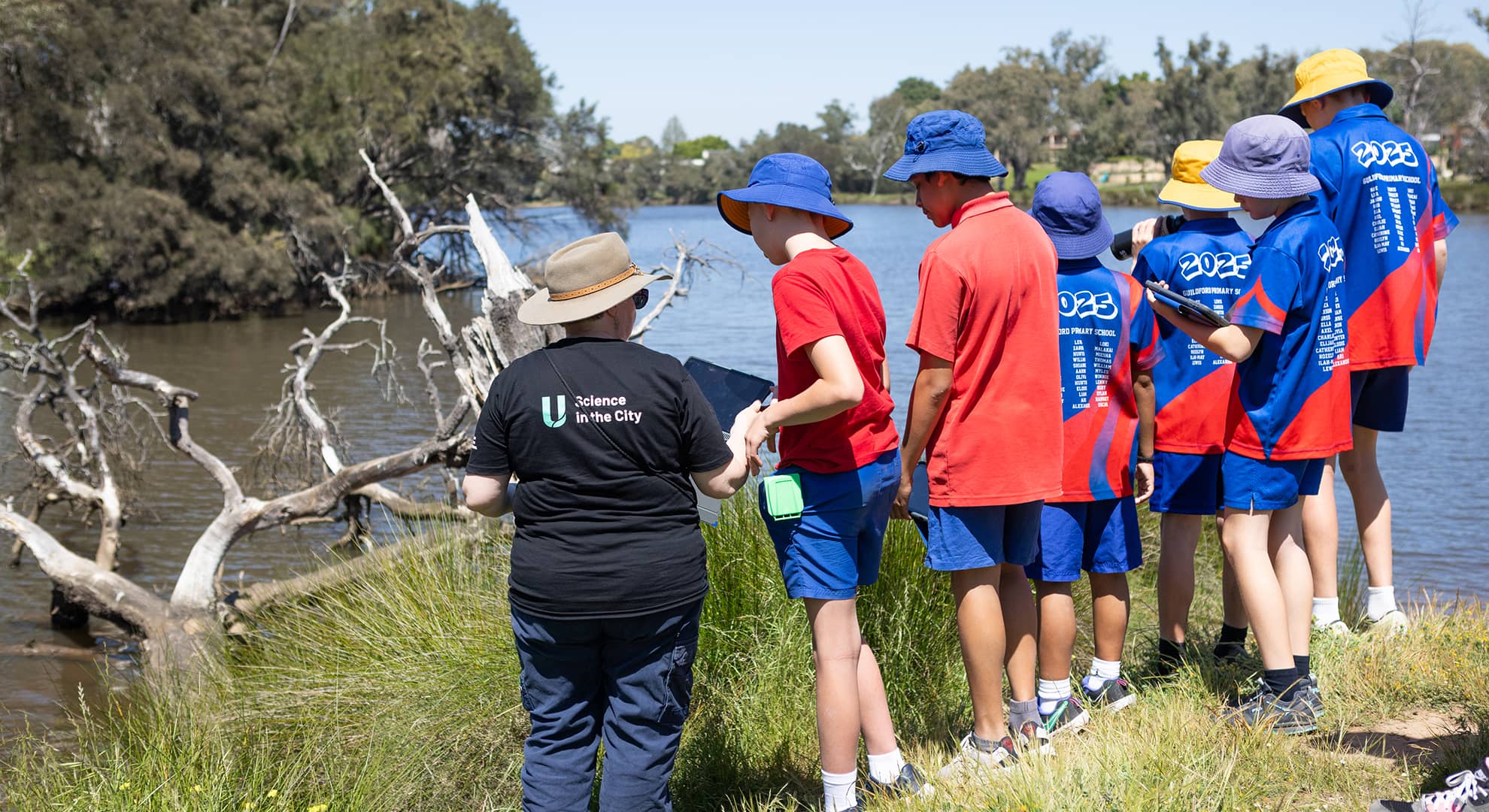Edith Cowan University (ECU) played a leading role in supporting the Bibbul Ngarma Aboriginal Association (BNAA) to deliver its BioBlitz week, held from 13 to 19 October.
The BioBlitz brought community, science, and culture together through a series of events along the lower Mandoon Bilya (Helena River). The week-long event saw ECU researchers from the School of Science join BNAA staff, Trillion Trees Australia, and students from four local schools to explore and record the region's rich biodiversity, fostering hands-on learning and collaboration in caring for Country.
The Mandoon Bilya BioBlitz aims to collect vital biodiversity data, deepen understanding of the river's ecosystem, build community connection with Noongar culture and inspire involvement in science and conservation.
 The BioBlitz aims to collect vital biodiversity data.
The BioBlitz aims to collect vital biodiversity data.
Students began the day with a Welcome to Country from Walter McGuire, Chairperson of BNAA, who shared stories of the Noongar connection to Country and insights about the cultural history of the Mandoon Bilya. Guided by ECU scientists, students then took part in hands-on biodiversity surveys, using the iNaturalist app to identify, record, and share information about local plant and animal species.
The activity not only revealed the rich variety of life along the river but also gave students and community members a deeper appreciation of the Mandoon Bilya's ecological and cultural significance.
"The Year 5 and 6 students were given a brief foray into the world of biological data collection, and we discovered an amazing diversity of bugs, trees, birds and even some fish and frogs. We found loads of different species every single day," said ECU Vice Chancellor's Research Fellow Dr Lizzy Lowe.
"It's wonderful for ECU to be part of community-driven projects like this, because they create such great opportunities for people of all ages to understand the cultural significance of their local area as well as being able to connect with nature and contribute to real scientific research." she added.
 The week-long event saw ECU researchers from the School of Science join BNAA staff, Trillion Trees Australia, and students from four local schools.
The week-long event saw ECU researchers from the School of Science join BNAA staff, Trillion Trees Australia, and students from four local schools.
The week culminated in the Mandoon Bilya BioBlitz Festival on 18 October at Mundaring Sculpture Park, featuring live performances of poetry and music, guest speakers, family activities, community stalls and food trucks. Coinciding with the Mundaring Hills Open Studios, the festival created a vibrant atmosphere of celebration, learning, and connection in the Perth Hills.
The BioBlitz was run by BNAA as part of their BoorYul-Bah-Bilya program and supported by the Conservation and Biodiversity Research Centre (ECU), the Centre for People Place and Planet (ECU), Inspiring Western Australia, Scitech, Department of Energy and Economic Diversification, Saferight Training, Bendigo Community Bank Mundaring, Shire of Mundaring, and Perth Hills Events.
To learn more, visit www.bibbul.org or follow the Bibbul Ngarma Aboriginal Association on social media.

 Guided by ECU scientists, students took part in hands-on biodiversity surveys.
Guided by ECU scientists, students took part in hands-on biodiversity surveys.



